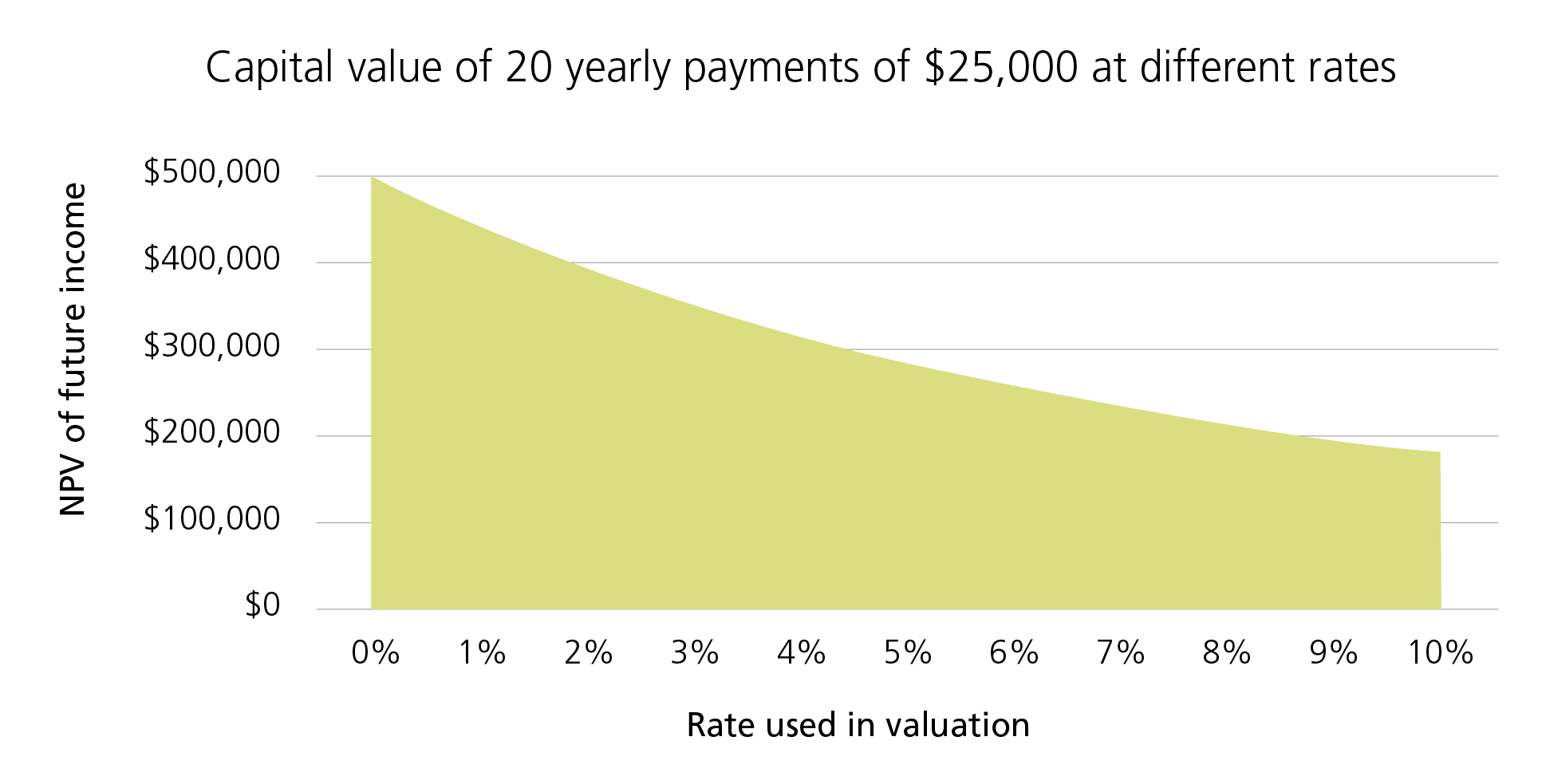Members need 'retirement income', not just retirement capital, nor just 'income'
Thought Leadership
People can understand the supply and demand dynamics for houses so that the grants get factored into prices. The same mechanism actually works for markets. In the current environment, low cash (or risk-free) rates have boosted the relative valuation of other assets (bonds and equities). Thus, the same level of income is now apparently worth ‘more’ than it was before. This is good on the balance sheet, but it doesn’t help retirees generate retirement income. On the flip side, equity market gains mean that new entrants to the market are paying higher and higher prices for the same level of income (i.e. yields fall as prices rise).
Consider this simple example (ignoring inflation). Imagine that you want income of $20,000 a year for 25 years. When rates were 5% p.a., you only needed $281,879 to generate that income from a fixed rate investment. If rates fall to 1% p.a. then you need $440,463, and of course if rates were 0% you would need the whole $500,000 up front. Imagine that you had $200,000 in savings when rates were 5%. You couldn’t afford this level of income. If you only look at the capital value a 50% market gain looks like a winning outcome as you now have $300,000. But this is only true if the rates don’t also fall. If rates fall to 1% pa, you would be further behind because that requires an additional 56% capital gain (from the 5% pa environment) to stand still.

The key point of this example is that it is not enough to focus on the asset value alone. Saving for retirement involves putting aside wages or other income and turning that into growing capital. It then needs to be converted to retirement income (including the steady consumption of the capital) so the retiree can spend it. Australians have mastered saving income to build capital, but to get retirement right we will need to convert that capital to retirement income.
This doesn’t have to be a one-off event. The best approach is probably one where there is a transition between building capital and converting it to retirement income. At the extreme, the super contributions from an employee’s last pay cheque can just be handed back the following month as part of their first income payment. At that stage in the cycle, not all of super is a long-term investment.


